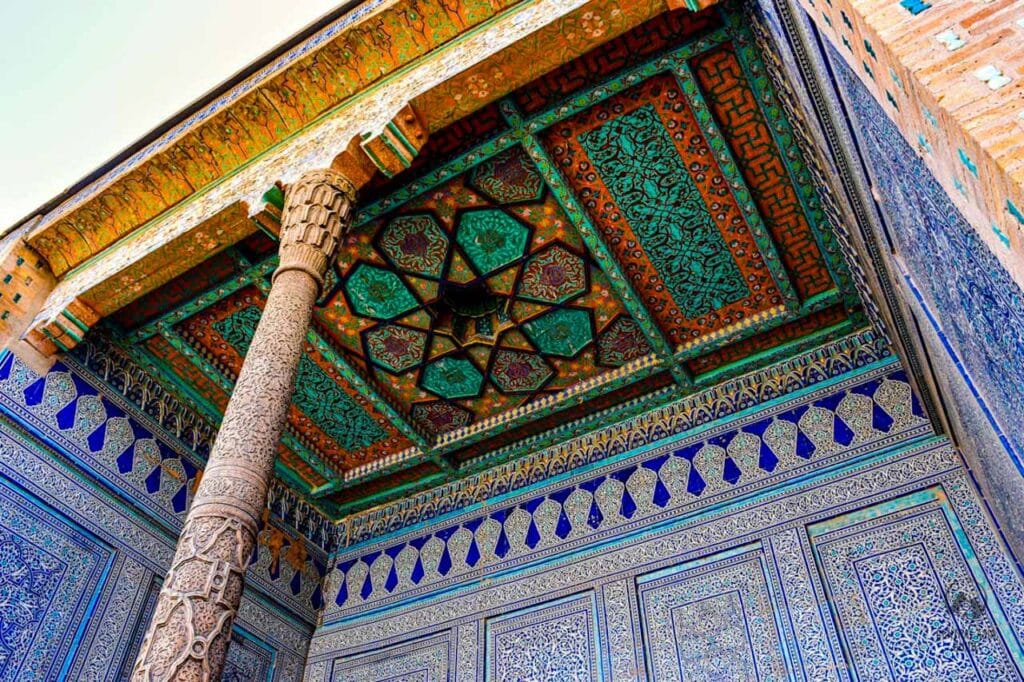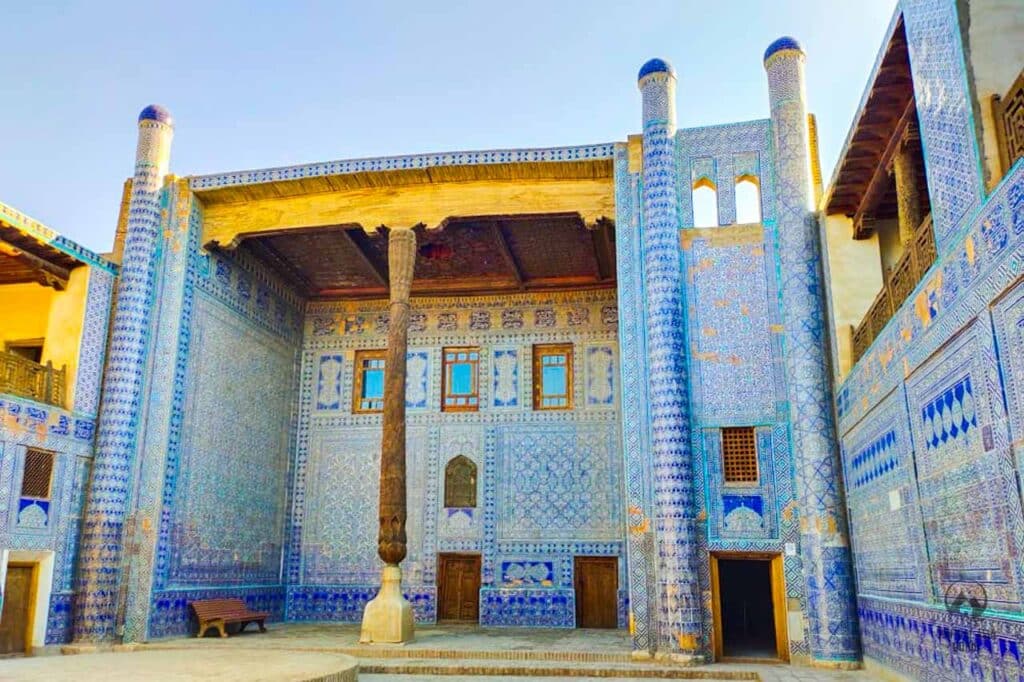Tach Khaouli Palast
Tash Khauli Palast
Seit der Antike war es für die Herrscher des Ostens unabdingbar, riesige Paläste zu errichten, nicht nur als Residenzen und Orte für Treffen mit Gästen, sondern auch als Symbole für Macht und Prestige. Choresm ist ein Beispiel dafür, dass die Paläste die Zentren der Herrschaft waren, in denen der Khan und seine Familie residierten und in denen wichtige Staatsangelegenheiten erledigt wurden.
Geschichte des Toshhovli Palastes
Eine der wichtigsten Perioden in der Geschichte des Khanats Chiwa fiel in die Regierungszeit von Allakuli Khan (1825-1842). Seine Herrschaft fiel in die goldene Ära von Khorezm, mit bemerkenswerten Fortschritten in Wirtschaft, Politik und Kultur. Der Wohlstand, der durch den Handel, insbesondere mit dem Russischen Reich, zustande kam, bereicherte die Region erheblich.
Tash-Hauli, was „Steinhof“ bedeutet, ist ein Palast, der zwischen 1830 und 1838 im östlichen Teil von Ichan Kala erbaut wurde. Der Palast wurde zum politischen, administrativen und Handelszentrum von Chiwa und spiegelte die Opulenz und Autorität der Khivan-Khane wider.


Tash-Hauli Architecture
The Tash-Hauli Palace, built under the command of Allakuli Khan, stands as a testament not only to the power of the Khivan khans but also to the exceptional craftsmanship of Khorezmian architects. The palace’s construction, however, was fraught with tragedy. Due to Allakuli Khan’s demand for rapid completion, several master builders who deemed the task impossible within such a tight timeframe were executed. Despite these challenges, the palace was completed in 8 years, becoming a symbol of resilience and architectural excellence.
Tash-Hauli’s design resembles a fortified structure, with high battlements, towers, and fortified gates. Its architectural style is inspired by traditional Khorezmian homes and country villas, featuring elegant courtyards, shaded columned aivans, and loggias.
The palace is divided into three main sections, arranged around inner courtyards. The northern part housed the Khan’s harem, while the formal reception room, known as Ishrat-Haul, adjoins the southeast.
The southwest section contained the court office. The heart of Ishrat-Hauli was a round stage that accommodated the Khan’s yurt, an essential element of the royal lifestyle. Long, winding corridors and rooms connected the various parts of the palace, making it both awe-inspiring and mysterious.
The Tash-Hauli Palace is one of the most well-preserved structures in Khiva, retaining much of its original grandeur. The unique and intricate designs crafted by Master Abdullah, often referred to as the „Genius“ by locals, continue to captivate visitors. Among the many fascinating stories surrounding the palace is the legend of a Russian stove-maker who, upon being commissioned to build a fireplace for the Khan, left behind a beautifully crafted carriage as a gift to the Khan’s harem. The carriage remains on display, serving as a symbol of the cultural exchange between Russia and Khorezm.
Today, Tash-Hauli Palace stands as a remarkable example of Khorezmian architecture and history, offering insight into the legacy of Allakuli Khan and the Khiva Khanate.
Andere Sehenswürdigkeiten in Chiwa
Seite aktualisiert 8.5.2025